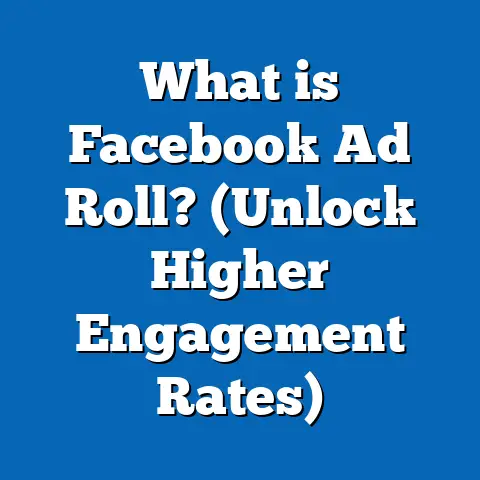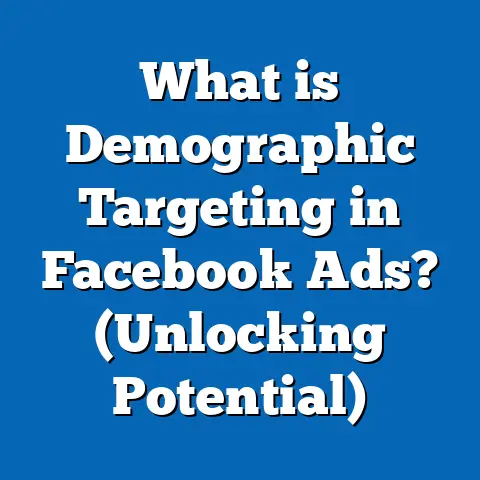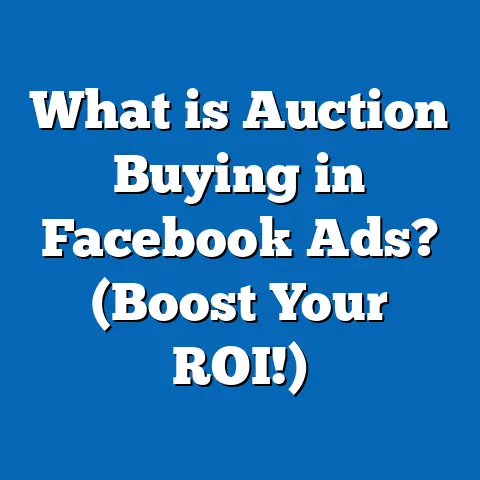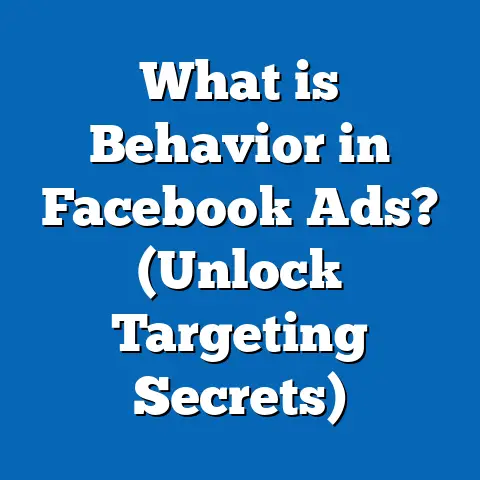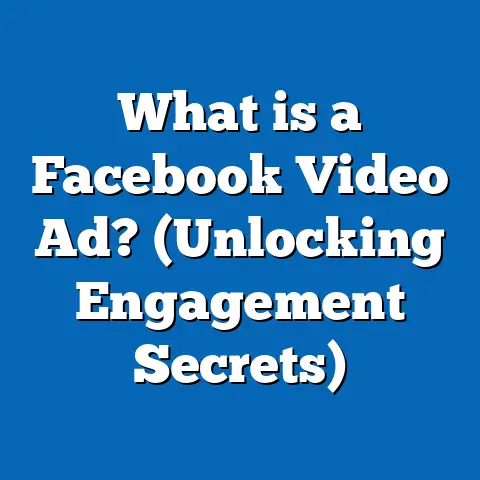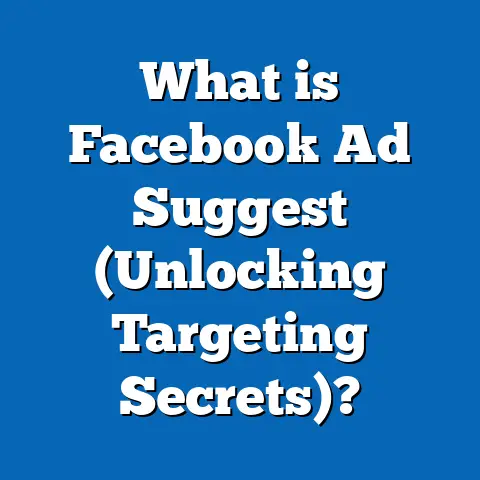What is Ad Fatigue in Facebook Ads? (Signs & Solutions Explained)
What is Ad Fatigue in Facebook Ads? (Signs & Solutions Explained)
Introduction: The Quick Fix Everyone Misses
When your Facebook ads suddenly stop delivering the results you expect, it’s easy to reach for a quick fix like increasing your ad budget or launching a new campaign overnight. Many marketers believe that throwing more money at the problem or starting fresh will solve everything. But most often, these quick fixes just mask a deeper issue—ad fatigue.
Ad fatigue is one of the most common yet overlooked reasons why Facebook Ads can underperform. If you don’t recognize and address ad fatigue early, your campaigns will slowly lose effectiveness, draining your budget while generating poor results. This guide will explain what ad fatigue is, how to detect it, and provide practical solutions to keep your Facebook advertising campaigns fresh, engaging, and profitable.
Understanding Ad Fatigue: The Basics
What Exactly is Ad Fatigue?
Ad fatigue happens when your audience has seen the same ad too many times, causing engagement to drop significantly. This overexposure leads to your audience becoming bored or annoyed by your message, resulting in fewer clicks, lower conversions, and increased costs.
Facebook measures this through a key metric called frequency, which tracks how many times an average user sees your ad.
- When frequency exceeds about 3-4 impressions per person, the likelihood of ad fatigue dramatically increases.
- Beyond this point, each additional impression tends to deliver less value and can even cause negative reactions.
Ad fatigue is a natural consequence of repeated exposure—a psychological phenomenon where repeated stimuli lose their impact over time.
Why Should Marketers Care About Ad Fatigue?
Ignoring ad fatigue can have several costly consequences:
- Budget Waste: You continue paying for impressions that no longer produce meaningful clicks or conversions.
- Decreasing ROI: Cost per result keeps rising as fewer people engage with your ads.
- Brand Damage: Overexposure to stale ads can annoy potential customers, damaging brand perception.
- Algorithm Penalties: Facebook’s algorithm reduces delivery for underperforming ads, further increasing costs.
According to a 2023 report from AdEspresso analyzing 1,000+ Facebook campaigns, campaigns with frequency above 4 experienced an average 30% drop in click-through rate (CTR) and a 20% increase in cost per action (CPA).
How Frequently Does Ad Fatigue Occur?
Facebook is one of the most popular advertising platforms globally with over 2 billion active users. Due to its scale and auction-based model, ad fatigue is a common challenge for almost every advertiser.
Industry surveys suggest:
- Around 75% of Facebook advertisers report experiencing ad fatigue within the first month of running campaigns.
- Smaller budgets and narrow audiences tend to experience fatigue faster due to rapid saturation.
Signs of Ad Fatigue: How to Spot It Early
Detecting ad fatigue early helps you act before your campaign performance deteriorates significantly.
1. Declining Click-Through Rate (CTR)
CTR is one of the clearest indicators. When your CTR steadily decreases while impressions remain stable or rise, it likely means users are ignoring your ads.
Example: An ad initially delivering a CTR of 3% drops to 1.2% over two weeks despite similar reach levels.
2. Rising Cost Per Click (CPC) and Cost Per Action (CPA)
As fewer people engage with your ads, Facebook’s bidding algorithm increases the cost to show ads to users who might convert. This leads to rising CPC and CPA.
| Metric | Before Fatigue | After Fatigue |
|---|---|---|
| CTR | 2.5% | 1.0% |
| CPC | $0.50 | $1.20 |
| CPA (Conversion) | $20 | $45 |
3. Increased Frequency
Facebook reports a frequency metric showing how many times an average user has seen your ad during the campaign.
- Frequency above 3–4 indicates risk of ad fatigue.
- Some campaigns with highly engaged audiences can tolerate higher frequencies but usually see performance drops beyond 5.
4. Negative Feedback
Facebook allows users to hide ads or report them as irrelevant or annoying. An increase in these actions signals audience irritation.
- Track “Hide Ad” feedback in Ads Manager.
- A spike in negative comments or reports often coincides with ad fatigue.
5. Lower Relevance Scores and Quality Rankings
Though Facebook phased out the old relevance score metric in 2021, it replaced it with Quality Ranking, Engagement Rate Ranking, and Conversion Rate Ranking.
- Declining scores in these categories indicate your ad’s creative or message no longer resonates.
Deep Dive: Data-Backed Insights & Research on Ad Fatigue
Frequency’s Impact on Campaign Performance: Hard Numbers
Multiple studies confirm the direct relationship between frequency and diminishing returns:
- HubSpot (2023): Found that CTR drops by nearly 50% when frequency exceeds 4 impressions per user.
- Facebook Internal Study: Every additional frequency point beyond 3 leads to a 10–15% decline in conversion rates.
- Wordstream Analysis: CPC can increase by up to 70% after frequency surpasses 5 impressions.
These trends hold across different industries and campaign objectives like awareness, traffic, lead generation, and conversions.
Case Study: E-Commerce Brand Campaign
An e-commerce brand selling fitness gear ran a month-long campaign promoting a new product line.
- Week 1: Frequency was 2.5; CTR stable at 3%
- Week 3: Frequency climbed to 5; CTR dropped to 1.1%
- CPC rose from $0.60 to $1.35
- Revenue from Facebook ads fell by 25%
Solution: They implemented creative rotation with new images and video ads combined with audience segmentation.
Result: CTR rebounded to 2.8%, CPC dropped back to $0.65, and revenue recovered within one week.
This shows how addressing ad fatigue quickly can restore campaign health dramatically.
Why Does Ad Fatigue Happen? Psychology and Platform Mechanics
User Psychology Behind Ad Fatigue
Repeated exposure causes:
- Boredom: The brain starts ignoring messages that feel repetitive.
- Irritation: Seeing the same ad too often can frustrate users.
- Desensitization: Users become less responsive as they tune out familiar content.
This phenomenon is supported by behavioral psychology concepts like habituation—where repeated stimuli elicit weaker responses over time.
How Facebook’s Algorithm Reacts
Facebook’s delivery system optimizes for engagement and conversions by analyzing real-time user behavior.
- When an ad’s CTR drops, Facebook reduces its delivery since it’s less likely to generate positive interactions.
- To compensate, it bids higher to show ads to fewer interested users, pushing CPC up.
- Eventually, if performance drops below thresholds, Facebook may stop delivering the ad altogether.
Creative Staleness Accelerates Fatigue
Using the same images, videos, headlines, and descriptions repeatedly causes your ads to lose appeal fast. Audiences crave novelty and fresh content.
Technical Concepts Explained Simply
Frequency
Frequency = Total impressions / Unique reach
Example: If your ad receives 10,000 impressions and reaches 2,500 unique users: Frequency=10,0002,500=4\text{Frequency} = \frac{10,000}{2,500} = 4
This means the average user has seen the ad 4 times.
Quality Ranking Metrics (Post-Relevance Score)
Facebook now evaluates ads using three key metrics compared to similar ads competing for the same audience:
- Quality Ranking: How your ad’s quality compares (based on user feedback such as hide rates).
- Engagement Rate Ranking: Expected engagement compared to competitors.
- Conversion Rate Ranking: Predicted conversion performance against other ads targeting similar audiences.
Ads suffering from ad fatigue usually see declines across these rankings.
How to Prevent and Fix Ad Fatigue: Practical Solutions
1. Rotate Creatives Regularly
Change your visuals and copy every 7–10 days or sooner if you detect early signs of fatigue.
Tips for Creative Rotation:
- Use different images or videos highlighting various product features or benefits.
- Test alternate headlines or call-to-actions.
- Introduce seasonal or event-based messaging.
Creative rotation not only combats boredom but helps identify winning elements through A/B testing.
2. Refresh Target Audiences
Avoid saturating small audience pools by:
- Expanding reach using lookalike audiences or interest targeting.
- Narrowing targeting with specific segments for tailored messaging.
Segmented audiences respond better and reduce frequency per user.
3. Control Frequency with Delivery Settings
While Facebook doesn’t allow strict frequency capping for all campaign types, you can manage frequency by:
- Using reach and frequency buying type campaigns where frequency caps are adjustable.
- Limiting budgets on small audiences to prevent overexposure.
For example, set frequency caps at 3–4 impressions per week per user for awareness campaigns.
4. Optimize Campaign Budget Optimization (CBO)
CBO lets Facebook distribute budget across multiple ad sets dynamically but requires monitoring frequency across sets carefully to avoid overexposure in certain segments.
5. Implement Sequential Advertising (Funnel Approach)
Show different ads in a planned sequence guiding users through awareness → consideration → conversion stages.
Example sequence:
- Awareness Ad: Brand story video
- Engagement Ad: Product benefits carousel
- Conversion Ad: Special offer with CTA
This reduces repetitiveness by varying content while building interest progressively.
6. Monitor Metrics Daily
Track key indicators such as:
| Metric | What It Tells You |
|---|---|
| CTR | Engagement level |
| CPC | Cost efficiency |
| Frequency | Exposure level |
| Negative Feedback | Audience irritation |
| Quality Rankings | Ad appeal compared to competitors |
Early detection lets you act before performance plummets.
Advanced Strategies Against Ad Fatigue
Dynamic Creative Testing
Facebook’s dynamic creative automatically tests multiple versions of images, headlines, descriptions, and CTAs by mixing and matching elements.
Benefits:
- Saves time on manual testing.
- Identifies top-performing combinations quickly.
- Keeps creatives fresh without constant manual updates.
Lookalike Audience Expansion
Create multiple lookalike audiences based on customer data but vary similarity percentages:
- Smaller % = closer match but smaller size
- Larger % = broader audience for expansion
Rotate between these groups regularly to reach fresh users and avoid saturating the same people repeatedly.
Budget Pacing & Scheduling
Strategically reduce daily spend or pause campaigns when frequency hits critical levels:
- Pause campaigns for a few days then restart with new creatives.
- Use dayparting to show ads only during high-performance hours reducing wasted impressions.
Comparing Ad Fatigue Across Platforms
Ad fatigue is not unique to Facebook but varies across platforms due to audience behavior and platform algorithms:
| Platform | Typical Frequency Threshold for Fatigue | Common Solutions |
|---|---|---|
| 3–4 | Creative rotation; audience refresh | |
| 3–5 | Story ads rotation; content variety | |
| 2–3 | Refine B2B targeting; message variation | |
| Google Display | Higher due to diverse placements | Copy changes; placement exclusions |
Facebook’s sophisticated auction system tends to amplify fatigue effects faster because it optimizes aggressively for user engagement signals.
Real-World Examples of Combating Ad Fatigue
Example 1: SaaS Company Driving Subscriptions
Problem: Subscription signups dropped despite steady clicks.
Action: Switched from static image ads to customer testimonial videos; segmented audience by industry verticals.
Result: CTR increased by 40%, CPA dropped by 25%, subscription growth resumed upward trend within two weeks.
Example 2: Local Retailer Facing Negative Feedback
Problem: Holiday sale ads received increasing negative comments and hides; CPC rising sharply.
Action: Launched “thank you” ads targeting past customers with exclusive deals; capped frequency at max three impressions per week per user using reach & frequency buying option.
Result: Negative feedback decreased by over 60%, total conversions increased by 18%.
Latest Trends & Features Addressing Ad Fatigue (2024 Update)
Facebook Advantage+ Audience
Automates audience expansion dynamically based on performance signals reducing saturation risk by constantly finding new users likely to convert.
AI-Powered Creative Suggestions
Facebook now automatically suggests new creative variations based on real-time data on what resonates best with your target audience.
Automated Rules for Campaign Management
Set conditional rules that automatically pause or adjust campaigns when CPC or frequency exceeds set limits—reducing manual workload while protecting budget efficiency.
Video & Interactive Ads Growth
Video formats naturally reduce fatigue as they provide varied storytelling opportunities and higher engagement rates compared to static images.
Step-by-Step Guide: Implementing an Anti-Ad Fatigue Strategy
- Audit Current Campaigns
- Review frequency metrics.
- Identify ads with declining CTR or rising CPC/CPA.
- Check negative feedback reports.
- Plan Creative Refresh
- Prepare at least three variations of images/videos/headlines.
- Schedule creative rotations every week or biweekly depending on campaign length.
- Segment Audiences
- Split broad audiences into smaller segments for tailored messaging.
- Create lookalike audiences at different similarity levels.
- Set Frequency Caps Where Possible
- Use reach & frequency campaigns for awareness objectives.
- Limit daily budgets on small audiences.
- Deploy Sequential Advertising Funnel
- Design multi-step ad sequences guiding users through engagement stages.
- Monitor Metrics Daily
- Use dashboards for CTR, CPC/CPA, frequency, negative feedback.
- Set automated alerts for threshold breaches.
- Use Automated Rules & Dynamic Creatives
- Enable dynamic creative testing.
- Apply automated pauses based on performance triggers.
- Test New Formats
- Incorporate videos, carousels, polls, or instant experiences.
- Evaluate & Optimize Continuously
- Analyze results weekly.
- Adjust creatives and audiences iteratively based on data insights.
Summary: Key Takeaways & Next Steps
Ad fatigue is a natural challenge in Facebook advertising but one that can be effectively managed through proactive strategies:
- Monitor engagement metrics closely for early signs of fatigue.
- Rotate creatives frequently and test dynamic content variations.
- Refresh audience targeting regularly to avoid oversaturation.
- Utilize advanced tools like dynamic creative testing and automated rules.
- Implement sequential advertising funnels for varied messaging experiences.
- Pause or adjust campaigns when frequency or costs rise beyond acceptable levels.
Addressing ad fatigue systematically protects your advertising budget while maximizing campaign effectiveness over time.
By treating ad fatigue as a crucial part of your Facebook marketing strategy rather than an afterthought, you ensure sustained performance even in competitive markets.
If you want me to provide additional content like downloadable templates for monitoring ad fatigue metrics or example creative rotation calendars, just ask!

